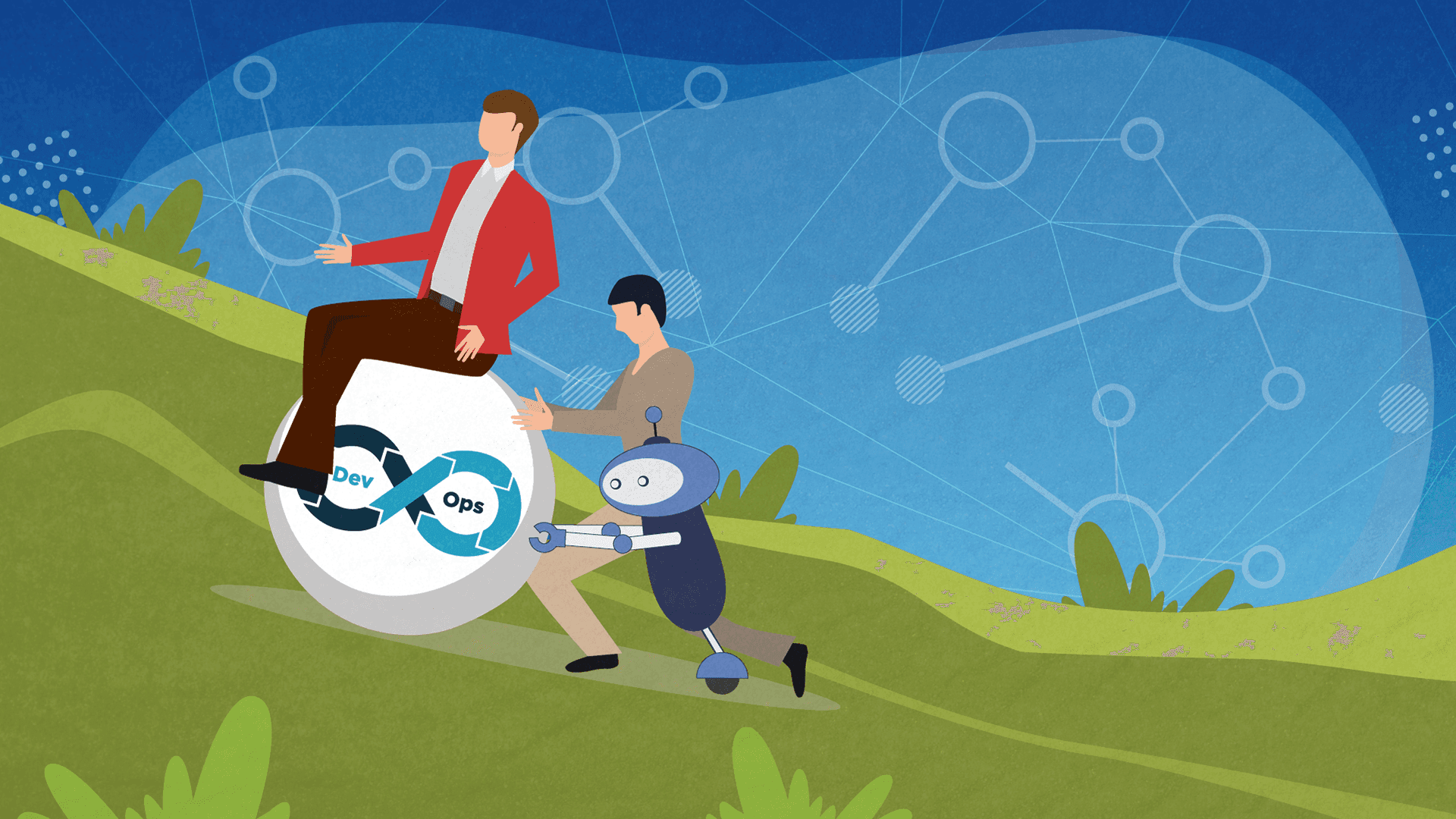Beginner's Guide to DevOps

If you’re just learning about DevOps, you probably feel overwhelmed by all the information that’s accessible online on this topic. It feels like there’s a mountain of articles you’ll need to go through before you start to understand the basics.
Wrong!
We at Share IT got you covered. Since we know DevOps is a super hot theme and that most people are struggling to source comprehensive and up-to-date knowledge sources on this topic - we’re going to sum it up all for you in one place!
For the next couple of weeks, we’re going to publish high-level, DevOps-focused posts to help you become super knowledgeable on this topic.
So, without further ado, let’s get down to business and first explain the main concepts:
What is DevOps?

There is no universal definition, but we at Share It like to tell our customers that DevOps is a process framework that ensures that the collaboration between the development and operations teams runs smoothly throughout the entire programming production process.
We’re talking about everything from the design to the actual development phases.
DevOps team help increases the speed and quality of deliverables. Their main goal is to serve their customers efficiently and become more competitive in the market by removing obstacles in the communication and collaboration areas of work.
That’s where the term "DevOps" originates from. It’s an amalgamation of the words "development" and "operations."
Customer-Centricity
Customer-centricity is the north star of every team that has a DevOps department. It’s the team’s job to build and nurture a collaborative culture between the development, operations, and business teams.
This might sound simple to you, but it’s not. The way these teams work together needs to be considered a critical aspect of every product creation journey.
More than Just Mechanics

DevOps teams are not just focused on tools and tasks. Their job is to create continuous value for the customers. To do that, they need to look beyond tools and technologies and focus on people and processes as well.
DevOps increases organizations' capability to deliver high-quality solutions at a record speed. It automates all processes, from build to deployment of an application or a product.
Where DevOps Teams Help the Most?
Before we had DevOps, software companies relied on two methodologies to keep projects moving forward:
- Waterfall
- Agile
We talked already about both of these methodologies in one of our previous posts titled: Non-Agile vs. Agile Methodologies: What’s the Difference?
As you probably remember if you read that article, both of these methodologies came with their own challenges. With Waterfall, running large projects was a nightmare. This approach made it super hard to change things on the go. One of the main reasons why that was the case: developers and testers never work together which always resulted in a lot of problems in the end. Fixing bugs became a huge issue.
Because of this, back in 2009, IT people started moving away from Waterfall and trying out Agile. They wanted to make the development process less linear and work in each stage independently. The benefit of this was to enable continuous testing early on and throughout the development cycle.
Yes, this process has brought more flexibility to the table because the team now works based on iterations, but some key problems still remained.
The code that works for the developer may not work for the operations team. Again, that’s because the bridge between the two teams is still not strong enough.
DevOps was recognized as a cure for that.
With DevOps, there is continuous integration between the deployment and the testing of code. Near real-time monitoring and immediate feedback through a DevOps continuous monitoring tool enabled both the developer and operations team to work better and smarter together.
With DevOps in place, deployment instantly becomes much easier, fast, and efficient. Scalability also becomes instantly visible and significant errors get fixed at the initial stage.
DevOps Lifecycle: What it is and How Does it Look Like?

Since you now know what DevOps is and why it’s important, let’s get a bit deeper into the subject. Let’s talk about the DevOps Lifecycle. This particular segment of the article will give you clarity on how DevOps functions.
There are six core phases in the DevOps Lifecycle:
- Source Code Management - This is the planning phase. This is where business owners, leads, and software teams set high-level goals for a specific project and then work on an execution plan. Once that is done, developers start to work on the code using tools like Git to store the application code.
- Continuous Build and Test - In this phase, it’s all about the building tools. Utilities like Maven and Gradle enter the scene and then the code gets transferred from different repositories and combined to form a fully working app. Once the app is assembled, it gets tested via automation testing tools, like Selenium and JUnit, to ensure software quality.
- Continuous Integration - After the testing is done, new features are integrated into the existing codebase.
- Continuous Deployment - In the 4th phase, the app gets packaged and deployed from the development server to the production server. Once the software is deployed, operations teams perform tasks, such as configuring servers and provisioning them with the required resources.
- Continuous Monitoring - In this phase, teams try to identify issues of specific releases and understand the impact on end-users.
- Software Released - Once everything is done and everyone is sure that the app is working properly and that there are no errors - it gets released into the market.
DevOps Only Thrives in Specific Environments
As you have probably figured out by now, DevOps requires a specialized team with a specialized mindset to work. That’s why leader that plan to add DevOps to their company, need to keep in mind that they’ll probably have to make some cultural changes to make this new collaboration system work.
Obviously, that’s never easy to implement. People fear change. It’s uncomfortable and challenging. Especially in this context.
However, if you want DevOps to actually work, this is an unavoidable step. You cannot expect your team to quickly deliver flawless applications that focus on user experience without the right culture, tools, and processes in place.
DevOps can live only in systems where everyone is on board with its general principles. It takes the right technology, situational assessment, and attitude to pull off successful software development and delivery. If everyone in the company is on the same page and understands the power of clear and consistent communication as well as the underlying business goals, then nothing can stand in your way to success.